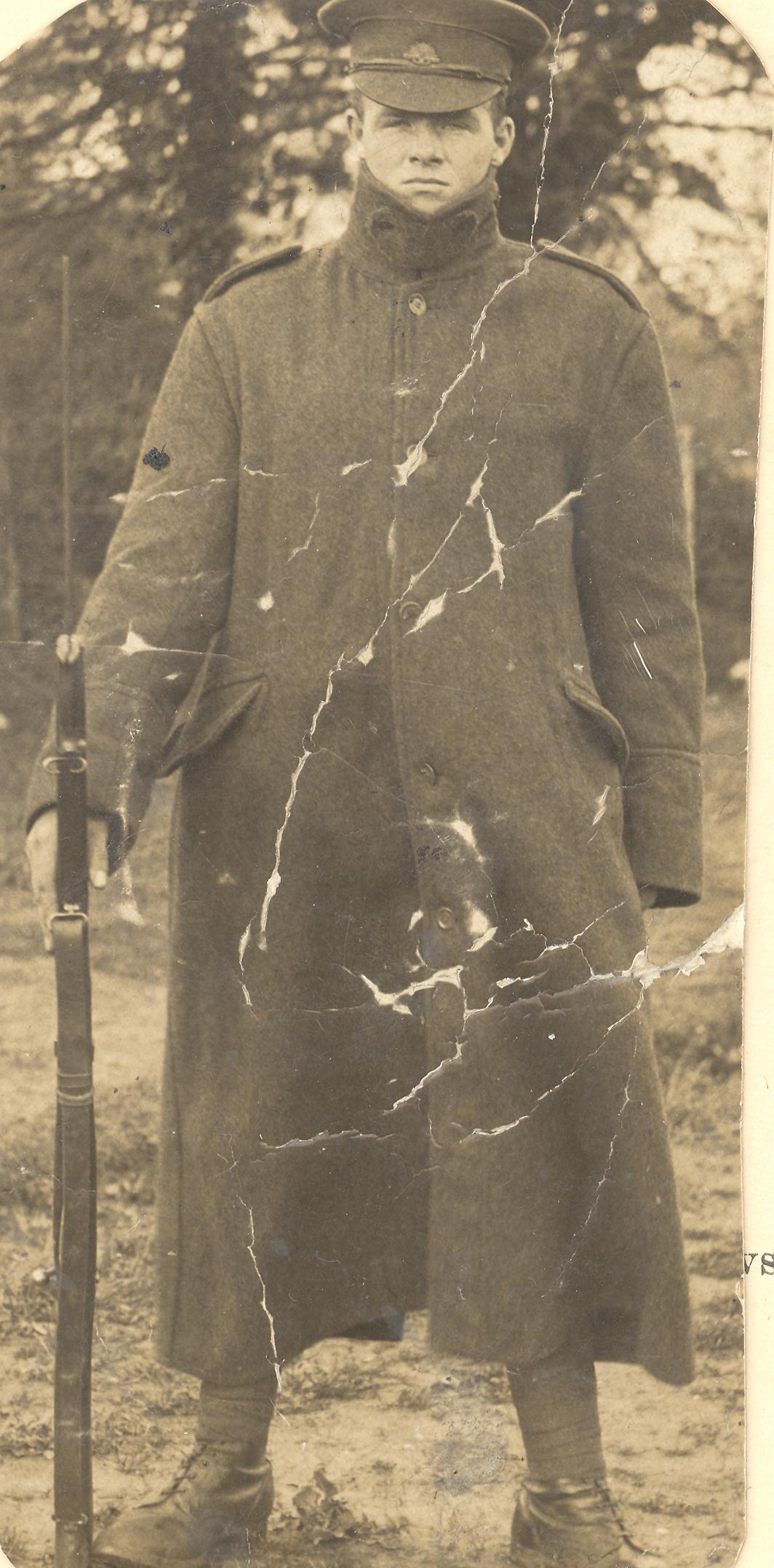Pte
Geoffrey William Chapman Knight
Information about birth
|
Date of birth: 01/03/1895 |
|
Place of birth: Chertsey, Surrey, England, United Kingdom |
General information
|
Last known residence: Charlton, Victoria, Australia |
|
Profession: Carpenter |
|
Religion: Church of England |
Army information
|
Country: Australia |
|
Force: Australian Imperial Force |
|
Rank: Private |
|
Service number: 2518 |
|
Enlistment date: 12/06/1916 |
|
Enlistment place: Bendigo, Victoria, Australia |
|
Units: — Australian Infantry, 60th Bn. (Last known unit) |
Information about death
|
Date of death: 26/09/1917 |
|
Place of death: Polygon Wood, Zonnebeke, Belgium |
|
Cause of death: Killed in action (K.I.A.) |
|
Age: 22 |
Memorial
|
Ypres (Menin Gate) Memorial Panel: 31H |
Distinctions and medals 2
|
British War Medal Medal |
|
Victory Medal Medal |
Points of interest 4
| #1 | Place of birth | ||
| #2 | Last known residence | ||
| #3 | Enlistment place | ||
| #4 | Place of death (approximate) |
My story
Geoffrey William Chapman Knight, a former carpenter, was born on 1895 in Chertsey, Surrey, England. On 12 June 1916 he enlisted at Bendigo, Victoria, Australia. Knight served as a private in the 60th Bn. Australian Infantry, part of the 15th Australian Brigade, of the 5th Australian Division.
On 26 September 1917, the 5th Australian Division took part in the Battle of Polygon Wood. The 14th and 15th Brigades attacked and captured both objectives. The first objective was a line running along the eastern edge of Polygon Wood. The second line about 300 yards east of the first objective. The 60th Battalion Australian Infantry was initially in reserve but was tasked to reinforce the 31st Battalion Australian Infantry holding the right flank. That night, the 60th Battalion moved their line forward, capturing Cameron House in the process.
Geoffrey William Chapman Knight, aged 22, was killed in action on September 26, 1917. Multiple witnesses state to the Red Cross that Private Knight was holding a “bombing post” in Polygon Wood when a shell landed nearby and killed him. Concerning his burial, Lance Corporal C. Turen stated the following: “Before we buried him, we took a letter from his pocket. His disc and paybook had been taken before and given in to the orderly room. We buried him at the place we found him and put a bayonet through the envelope which had his name on it and put a helmet on the bayonet.” His remains were not recovered or identified after the war. Private Knight has no known grave and is remembered on panel 31 of the Ypres (Menin Gate) Memorial.
On 26 September 1917, the 5th Australian Division took part in the Battle of Polygon Wood. The 14th and 15th Brigades attacked and captured both objectives. The first objective was a line running along the eastern edge of Polygon Wood. The second line about 300 yards east of the first objective. The 60th Battalion Australian Infantry was initially in reserve but was tasked to reinforce the 31st Battalion Australian Infantry holding the right flank. That night, the 60th Battalion moved their line forward, capturing Cameron House in the process.
Geoffrey William Chapman Knight, aged 22, was killed in action on September 26, 1917. Multiple witnesses state to the Red Cross that Private Knight was holding a “bombing post” in Polygon Wood when a shell landed nearby and killed him. Concerning his burial, Lance Corporal C. Turen stated the following: “Before we buried him, we took a letter from his pocket. His disc and paybook had been taken before and given in to the orderly room. We buried him at the place we found him and put a bayonet through the envelope which had his name on it and put a helmet on the bayonet.” His remains were not recovered or identified after the war. Private Knight has no known grave and is remembered on panel 31 of the Ypres (Menin Gate) Memorial.
Sources 5
|
15th Infantry Brigade (Australian War Memorial, Campbell (AWM), AWM4 23/15/19). https://www.awm.gov.au/ Sources used |
|
60th Infantry Battalion (Australian War Memorial, Campbell (AWM), AWM4 23/77/20). https://www.awm.gov.au/ Sources used |
|
Australian Red Cross Wounded and Missing Enquiry Bureau (Australian War Memorial, Campbell (AWM), RCDIG1064166). https://www.awm.gov.au/ Sources used |
|
McCarthy, Chris. Passchendaele the day-by-day account (London: Uniform, London, 2018), 94-95. Sources used |
|
Unit embarkation nominal rolls, 1914-18 War (Australian War Memorial, Campbell (AWM), AWM8). https://www.awm.gov.au/ Sources used |
More information 4
|
Namenlijst (In Flanders Fields Museum) https://namenlijst.org/publicsearch/#/person/_id=9935ba0f-bd01-4a72-a326-743e7ddc7771 |
|
Commonwealth War Graves Commission Database https://www.cwgc.org/find-records/find-war-dead/casualty-details/924744 |
|
The AIF Project (UNSW Canberra) https://aif.adfa.edu.au/showPerson?pid=167402 |
|
Lives of the First World War (Imperial War Museum) https://livesofthefirstworldwar.iwm.org.uk/lifestory/7505496 |
